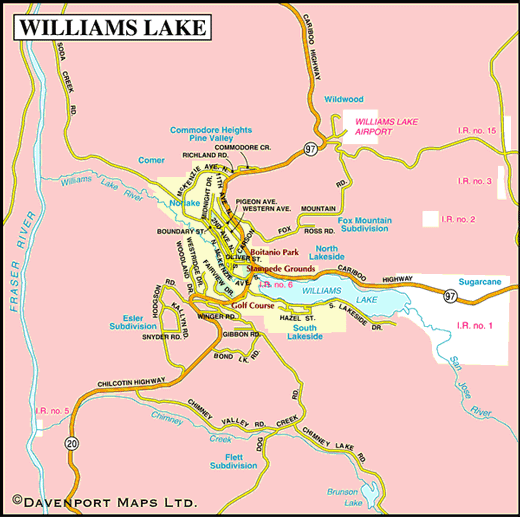Wildlife Viewing Operators: Cariboo, Chilcotin, Coast
The Cariboo Highway
If ospreys and eagles are your kind of bird, go to Green Lake Provincial Park. The shallow, reedy west end of the lake is attractive to waterfowl as a nesting and migratory resting area. At 100 Mile House on the Cariboo Highway 97, BC Wildlife Watch has a viewing site located in the marsh behind the Visitor Centre. Look for moose, sandhill cranes, and bald eagles, as well as waterfowl by the thousands.
At Williams Lake, the Scout Island Nature Centre focuses on the marshland and the superb birding in it. Spotting a yellow-breasted blackbird won’t require much effort, but will make your visit here entirely worthwhile.
The Bella Coola Road (Hwy 20)
Magnificent trumpeter swans winter at Lonesome Lake, south of Highway 20 in Tweedsmuir South Provincial Park. A heartfelt description of a Chilcotin pioneer’s relationship with these birds is recorded in Ralph Edwards of Lonesome Lake by Ed Gould.
The Chilanko Forks Wildlife Management Area, a protected marshland on Hwy 20 near Chilanko Forks, 38 miles (62 km) west of Alexis Creek, is home to more than 52 species of birds (among them waterfowl, hummingbirds, and woodpeckers), as well as beavers.
[FAGP id=27303]
Puntzi Lake, north of Hwy 20, about 35 miles (60 km) west of Alexis Creek, is a feeding area for white pelicans in the spring and summer and trumpeter swans from fall to freeze-up. Other viewing sites are on Alkali, Anahim, and Pantag Lakes. Never approach nesting white pelicans, and keep well back when they are foraging; any encroachment may cause adult pelicans to abandon their nests or feeding grounds.
White Pelican Provincial Park, located northwest of Williams Lake on the Chilcotin Plateau, provides a sanctuary for one of the world’s most beautiful birds, the White Pelican. The park incorporates and completely surrounds Stum Lake, and is managed exclusively to protect the provincial pelican population.
Nine miles (15 km) south of Hwy 20 on Farwell Canyon Road is the California Bighorn Sheep Reserve, a more than 1,000-acre (400-hectare) game reserve at the confluence of the Fraser and Chilcotin Rivers. The reserve is home to 500 bighorns, one-fifth of the world’s population. Watch for groups of them scaling the steep sandstone riverbanks.
Inside Passage and Discovery Coast
The midcoast is bald eagle country, and kayakers will also have the company of the ubiquitous kingfisher, common loon, cormorant, and sandpiper. In the Hakai Luxvbalis Conservancy Area, over 100 species of birds have been identified, ravens and ospreys among them. Feeding flocks of gulls, auklets, murres, and murrelets are numerous in the waters of Kildidt and Queens Sounds. Black oystercatchers, pelagic cormorants, surf birds, and both black and ruddy turnstones are also common.
The intertidal waters are home to an amazing number of marine life form, and their existence and activities are controlled by the rhythmic movements of the tides. Every tide pool has its own distinctive inhabitants: mollusca, crabs, starfish, anemones, sea urchins, and many others.
Marine Mammals to watch for include harbour seals, sea lions, beavers, river otters, orcas, and humpback whales. Offshore waters are home to minke, gray, and humpback whales, as well as porpoises and dolphins. Terrestrial wildlife includes black-tailed deer, mink, and wolves, as well as black bear, Kermode bear, and (on the mainland) the largest grizzly bears in the province.



